
RMS Caronia was a Cunard Line transatlantic steam ocean liner. She was launched in 1904 and scrapped in 1932. In World War I she was first an armed merchant cruiser (AMC) and then a troop ship.

RMS Carmania was a Cunard Line transatlantic steam turbine ocean liner. She was launched in 1905 and scrapped in 1932. In World War I she was first an armed merchant cruiser (AMC) and then a troop ship.

HMS Montclare (F85) was a British ocean liner that was commissioned into the Royal Navy as an armed merchant cruiser in 1939, converted into a destroyer depot ship in 1944 and a submarine depot ship in 1946. She was decommissioned in 1954 and scrapped in 1958.
SS Chenab was a steamship that was built in England in 1911 and scrapped in Scotland in 1953. For nearly two decades she was part of Nourse Line, which carried Girmityas from India to colonies in the Caribbean and the Pacific. In 1914 she was requisitioned for service in the First World War.

HMS Forfar (F30) was a British ocean liner that was commissioned into the Royal Navy as an armed merchant cruiser in 1939 and sunk by enemy action in 1940. She was launched in Scotland in 1920 as a transatlantic liner for the Canadian Pacific Steamship Company as Montrose. She was one of three sister ships. The others were Montcalm, also launched in 1920, and Montclare, launched in 1921.
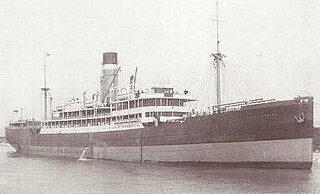
SS City of Venice was an intermediate ocean liner that was launched in 1924 in Northern Ireland for Ellerman Lines. In the Second World War she was a troop ship. In 1943 a U-boat sank her in the Mediterranean, killing 22 of the crew and troops aboard.
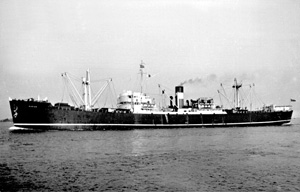
SS Empire Galahad was a refrigerated cargo ship built in 1942 and scrapped in 1967. She was also called SS Celtic Star (1946), SS Murillo (1946–52), SS Bogliasco (1952–54), MV Bogliasco (1954–63) and MV Ocean Peace (1963–67). She was built as a steamship, but in 1954 she was converted into a motor ship. She was scrapped in Taiwan in 1967.
SS Patroclus was a UK steam turbine passenger and refrigerated cargo liner launched in 1923. She was the third of five ships to bear the name.

HMS Hector was a UK steam turbine passenger and refrigerated cargo liner launched in 1924. She was the fourth of six civilian ships to bear the name.
SS Manistee was an Elders & Fyffes Ltd banana boat that was launched in 1920. She was one of a numerous class of similar banana boats built for Elders & Fyffes in the 1920s.
SS Automedon was a Blue Funnel Line refrigerated cargo steamship. She was launched in 1921 on the River Tyne as one of a class of 11 ships to replace many of Blue Funnel's losses in the First World War.
Arpha was a 602 GRT passenger ferry built in 1900 as Canterbury for the South Eastern and Chatham Railway. She passed to the Southern Railway on 1 January 1923. She was sold to W E Guinness in 1926 and renamed Arpha. In 1938 she was sold to Sark Motorships Ltd, only to be requisitioned by the Royal Navy in 1939. Postwar, she was sold to Compania Shell de Venezuela and renamed Coriano. After a further change of ownership she was scrapped in 1955.
MV Nottingham was a refrigerated cargo motor ship that was built in Scotland in 1941 for the Federal Steam Navigation Co. On her maiden voyage a u-boat torpedoed her, sinking her with all hands.
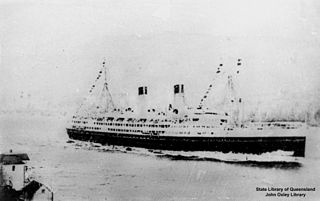
MV Aorangi was a transpacific ocean liner and refrigerated cargo ship. She was launched in 1924 in Scotland and scrapped in 1953. Her regular route was between Sydney and Vancouver via Auckland, Suva and Honolulu.
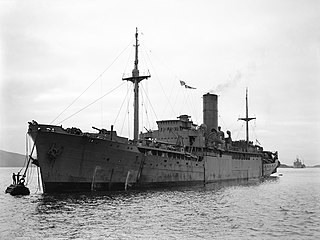
HMS Agamemnon was originally the Blue Funnel Line refrigerated cargo ship Agamemnon. She was built in 1929, traded between the UK and the Far East, and was scrapped in 1963. During the Second World War she was converted into an auxiliary minelayer in 1940, and then into an amenities ship in 1943.
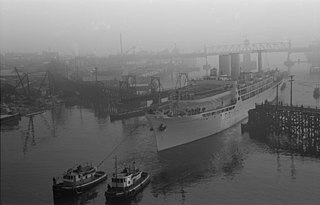
HMS Menestheus was originally the Blue Funnel Line refrigerated cargo ship Menestheus. She was built in 1929, and traded between the UK and the Far East. She was an auxiliary minelayer from 1940 to 1943. In 1945, during the Second World War, she was converted into an amenities ship. She was scrapped in 1953 after being gutted by fire.

HMS Southern Prince was a motor ship that was built in 1929 as the refrigerated cargo ship Southern Prince. She was commissioned into the Royal Navy in 1940 as a minelayer. She became a headquarters ship and then an accommodation ship in 1944, was a fleet training ship in 1945, and returned to civilian trade in 1946. In 1947 she was sold to Italian owners who had her refitted as a passenger ship and renamed her Anna C. From 1952 she was a cruise ship. She was scrapped in 1972.
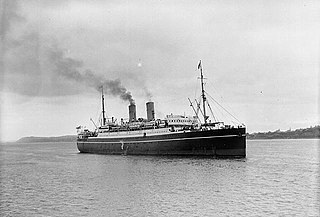
SS Metagama was a transatlantic ocean liner That was launched in 1914 and scrapped in 1934. The Canadian Pacific Railway Co owned her and the Canadian Pacific Steamship Co operated her. She was a pioneering example of a "cabin class" passenger ship.
SS Huntingdon was a refrigerated steam cargo liner that was built in Germany in 1920 as Münsterland. The United Kingdom took her as war reparations and sold her to the Federal Steam Navigation Company, who renamed her Huntingdon. She operated between Britain and Australasia until 1941, when an Italian submarine sank her in the Atlantic Ocean.
SS Verdala was a cargo and passenger steamship that was built in Scotland in 1913. Several times she changed owners and was renamed: as Mongolian Prince in 1917, Istok in 1928 and finally Maycrest in 1940.











